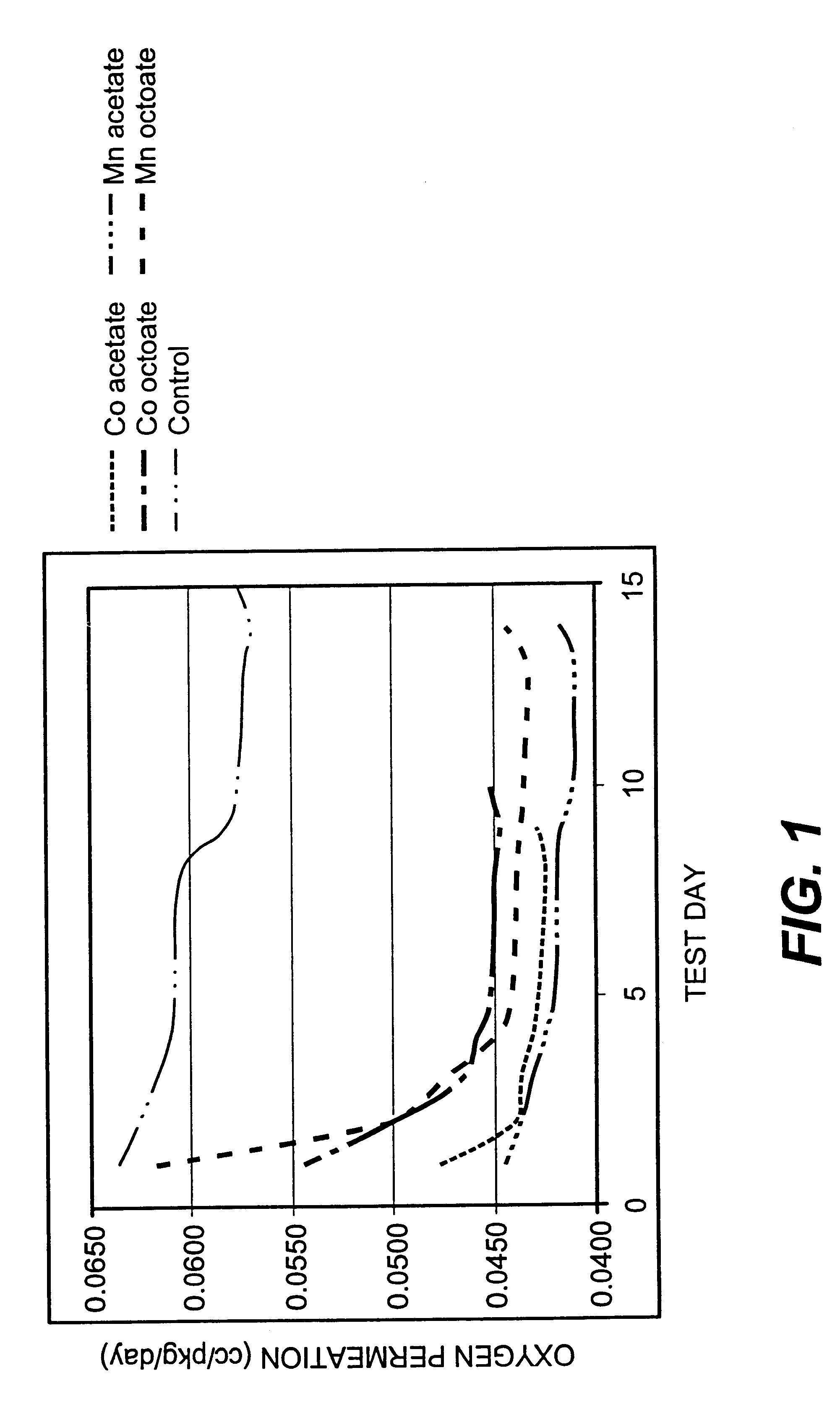Process for reduction of acetaldehyde and oxygen in beverages contained in polyester-based packaging
a technology of polyester-based packaging and acetaldehyde, which is applied in the field of packaging, can solve the problems of reducing the recycling efficiency of plastic containers, so as to reduce or eliminate the migration of acetaldehyde and reduce or eliminate the migration of oxygen
- Summary
- Abstract
- Description
- Claims
- Application Information
AI Technical Summary
Benefits of technology
Problems solved by technology
Method used
Image
Examples
example 1
100 grams of cobalt octoate (12 wt % cobalt) was mixed with 100 grams of synthetic mineral oil. 20 grams of this mixture was coated onto 24 kg of dry PET pellets. The coated pellets where then fed to an Arburg unit cavity injection molding machine, running at 520.degree. F. 27 gram preforms were made with a 30 second cycle time. The preforms were blown into 20 oz containers, using a Sidel SBO-2 blower molder. The resulting bottles had 50 ppm cobalt (as Cobalt octoate).
examples 2-6
are directed to the absorption of oxygen into PET containers comprising oxidation catalysts. The PET container of Example 2 was the control and contained no oxidation catalyst. Example 3 comprised 50 ppm of cobalt as cobalt acetate. Example 4 comprised 50 ppm of cobalt as cobalt octoate. The container of Example 5 comprised 50 ppm of manganese as manganese octoate, and Example 6 contained 50 ppm of manganese as manganese acetate.
In each example, the permeation rate of oxygen was determined by utilizing a Mocon OX-TRAN permeation measurement instrument. To measure oxygen ingress, each PET container was mounted on the OX-TRAN. The outer surface of the container was exposed to air at ambient temperature and humidity, while the inside of the container was continually swept with oxygen-free nitrogen at a rate of 10 to 20 cc / min. The sweep gas was then passed through a coulometric sensor, which electrochemically measured the amount of oxygen present in the sweep gas. From the detector res...
examples 7-9
are directed to acetaldehyde migration from PET containers into water.
PUM
| Property | Measurement | Unit |
|---|---|---|
| wt % | aaaaa | aaaaa |
| cycle time | aaaaa | aaaaa |
| permeation | aaaaa | aaaaa |
Abstract
Description
Claims
Application Information
 Login to View More
Login to View More - R&D
- Intellectual Property
- Life Sciences
- Materials
- Tech Scout
- Unparalleled Data Quality
- Higher Quality Content
- 60% Fewer Hallucinations
Browse by: Latest US Patents, China's latest patents, Technical Efficacy Thesaurus, Application Domain, Technology Topic, Popular Technical Reports.
© 2025 PatSnap. All rights reserved.Legal|Privacy policy|Modern Slavery Act Transparency Statement|Sitemap|About US| Contact US: help@patsnap.com

